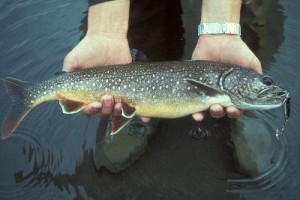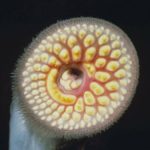After decades of collaborative efforts with New York State Department of Environmental Conservation (NYDEC), Vermont Fish and Wildlife Department(VFWD), and the U.S. Fish and Wildlife Service (USFWS), biologists consider the Lake Champlain lake trout population to be restored.
As a result, the wild population no longer needs to be augmented by hatchery-reared fish, and stocking will end after this spring.
The decision was announced by the Lake Champlain Fish and Wildlife Management Cooperative at its annual meeting on April 10, 2025.
The Cooperative will stock trout once more this spring, then continue to assess the health of the population and prepare a plan that includes benchmarks for reinstituting stocking if wild lake trout numbers appear to be declining.
The Cooperative is comprised of representatives from the New York State Department of Environmental Conservation, Vermont Fish and Wildlife Department, and U.S. Fish and Wildlife Service.
The Cooperative has collaborated to increase the lake trout population since 1972, by stocking hatchery-raised juvenile trout and initiating a sea lamprey control program in 1990.
Sea lamprey is an invasive parasitic species that preys on the fish. The latest survey of lake trout suggests Lake Champlain’s population is self-sustaining because of these measures.
It quickly became apparent that invasive sea lamprey, which first entered the lake from the Hudson River through the Champlain Canal, were preying on the stocked trout.
In 1990, the Fish and Wildlife Service partnered with the state agencies on a sea lamprey control program, and the federal agency has led the program since 2011.
While stocking was critical given losses to sea lamprey, successful re-establishment of a wild lake trout population would not have been possible without strong measures to control the invasive species.
Native to the Atlantic Ocean, sea lamprey play an important role in ocean and coastal river ecosystems but cause havoc when they invade inland waters with no natural predators. Lamprey latch onto fish like lake trout and feed off their bodily fluids, seriously harming or killing the hosts.
The USFWS lamprey control program is multifaceted and includes adding physical barriers to rivers and streams entering Lake Champlain; applying lampricides that target and kill larval sea lamprey before they prey on fish; and trapping and removing adults before they can spawn.
After reaching a high of 99 sea lamprey woundings per 100 lake trout in 2006, the rate dropped to 23 per 100 in 2022. The wounding rate has hovered around the cooperative’s target of 25 for the last two years.
Continued control of this invasive species will support restoration of other native fish species and sustain a thriving recreational lake trout fishery that bolsters local economies. For every $1 invested in the sea lamprey control program, $3.50 is returned to the economy.
In addition to sea lamprey, another invasive fish may be impacting the lake’s trout population. Research conducted by the University of Vermont found that lake trout population recovery in the lake occurred while alewife populations were increasing in the lake. Alewives were found in Lake Champlain in 2005. Their populations quickly expanded.
Recreational fishing in Lake Champlain generates about $474 million in economic activity annually. The lake trout restoration program was created in the 1950s by the state agencies, who began stocking the lake annually with yearling lake trout.

